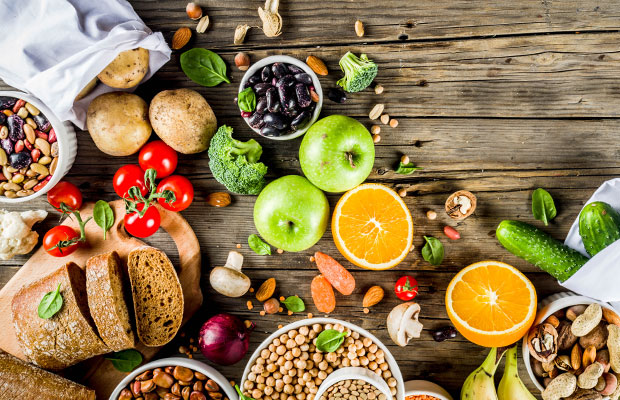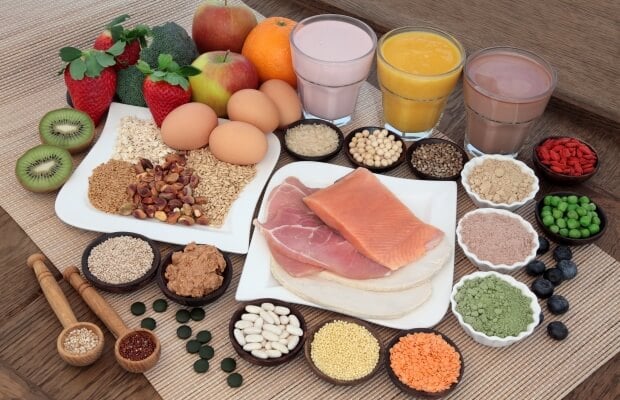Even if you’re not sure what pulses are, there’s a good chance you have eaten them – think of the humble baked bean.
All tinned or dried beans, peas and lentils are pulses. They’re great to add to your diet, because they are high in protein and fibre, low in fat and cheap to buy. That means they can save you money, help you manage your weight and lower your risk of bowel cancer. And they’re good for the environment too. They don’t need much water or fertiliser, and they even improve the soil for other crops.
Pulses are part of the legume family – the main difference between pulses and legumes is that pulses are dried before they are eaten (so fresh peas are legumes; dried peas are pulses). The exception is peanuts and soya beans, which are classed as legumes, and are higher in fat and lower in carbohydrate than other legumes.
Want to get fit and healthy?
Sign up to our fortnightly Heart Matters newsletter to receive healthy recipes, new activity ideas, and expert tips for managing your health. Joining is free and takes two minutes.
I’d like to sign-up
So, why should I add pulses to my diet?
Replacing half or even all the meat you eat with pulses is a great way to eat less unhealthy saturated fat, manage your weight and keep your digestive system healthy. You will also feel better and reduce your risk of a heart attack or stroke.
If you’re thinking of doing ‘Veganuary’ this coming January, pulses will help you to get a balanced diet – and even if you’re not, they have a lot to offer all of us.
They can do a similar job to meat in providing the protein your body needs to repair itself. For example, one portion of pulses (three heaped tablespoons) provides up to 9g of protein – about a sixth of what you need in a day. One tin of kidney beans contains as much protein as a portion of beef mince, and almost no fat and no salt (unless it’s been added – check the label).
Pulses are one of the highest fibre foods – just one portion of pulses provides about a third of the fibre you need for the entire day. That means they can help lower your risk of heart disease, stroke, type 2 diabetes and bowel cancer. Their mix of protein and fibre means they are digested slowly, making you feel fuller for longer.
Can I get enough protein from pulses?

Eating a variety of plant-based foods and pulses can give you all the protein you need
You might have heard that the protein in beans and lentils isn’t a ‘complete protein’, but as long as you eat a variety of plant-based foods such as wholegrains and nuts, you’ll get all the protein you need.
What’s more, pulses are one of the few foods to be classed as both a vegetable and a protein. Three heaped tablespoons count as one of your 5-a-day, and will provide the potassium, zinc, B-vitamins and antioxidants you need to keep healthy. But they can only count as one of your five, because they don’t contain the same mixture of nutrients as other fruit and vegetables.
That doesn’t mean you need to stick to one portion. As long as you’re also getting plenty of fruit and vegetables, and some wholegrains and dairy alternatives, you can include pulses in your meals and snacks throughout the day.
Are all pulse-based snacks good for me?
There's a growing range of pulse-based snacks, such as lentil crisps or roasted chickpeas. They might contain more fibre and protein than other snacks like crisps, but that doesn't mean they're good for you. Many are high in salt or fat. Check the labels - watch out for red and amber traffic lights on your food labels.
Easy ways to eat pulses
- Buy tinned beans and lentils – you can use them straight from the tin (choose the ones without added salt)
- Add cannellini or butter beans, or green or brown lentils, to a salad for lunch
- Buy lentil or bean soup (tinned or fresh) for lunch (choose one that is low in salt)
- Add extra kidney beans to your favourite chilli
- Homemade hummus using tinned chickpeas only takes a couple of minutes to make if you have a food processor – it’s cheaper than shop-bought
- Snack on hummus (homemade or shop-bought) with vegetable sticks, or use hummus in sandwiches instead of butter or mayonnaise
- Replace half the meat in your bolognese with green or brown lentils
Discover more healthy recipes for beans and pulses, like this delicious chilli con carne.
Back to top ^









